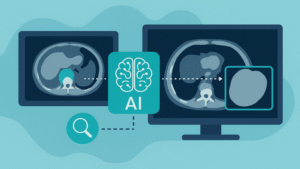https://theworldfinancialforum.com/participate/

How Oracle is Embedding AI into Enterprise Workflows to Drive Smarter, Faster, and More Automated Business Solutions”
Over the past few months, I’ve been closely following how Oracle has been positioning itself in the artificial intelligence space. What caught my attention is not just the technology itself, but how Oracle is embedding AI into the tools that businesses already rely on — from databases to financial applications. Instead of chasing hype, Oracle seems to be taking a practical route: making AI accessible, secure, and enterprise-ready. That’s what makes their approach stand out to me, and why I wanted to take a deeper look into what Oracle is really doing in AI.Oracle is embedding AI directly into its databases, applications, and cloud services, making adoption seamless for enterprises.
The company’s Autonomous Database, Fusion Applications, and OCI Generative AI Service showcase a practical AI-first strategy.
Partnerships with NVIDIA, Cohere, and OpenAI strengthen its position in the enterprise AI race.
Industry-specific AI agents, like those in healthcare and finance, speed adoption with tailored use cases.
Oracle’s stock surged last week to its highest level in decades, reflecting investor confidence in its AI-driven growth.
The challenge now: converting AI hype into sustained revenue and long-term momentum.
Oracle’s AI Vision
Oracle has long been a heavyweight in enterprise software and databases. Today, the company is leaning into artificial intelligence as the connective tissue that makes its cloud, data, and applications smarter, faster, and more automated — positioning itself as a key partner for organizations that want AI baked directly into their core operations.
A Practical AI Approach
Rather than offering AI as a standalone product, Oracle focuses on embedding intelligence into familiar enterprise tools and infrastructure. That means:
Self-managing databases that reduce routine administration through machine learning.
Business applications that surface predictions, automate workflows, and provide contextual recommendations inside everyday tasks.
Cloud services tuned for AI workloads — offering high-performance compute and storage to train and run models at scale.
This strategy lowers the barrier for adoption: customers get advanced AI capabilities inside systems they already trust, instead of bolting on separate point solutions.
What Oracle Is Doing in AI
1. AI in the Database
Oracle’s Autonomous Database is a flagship AI-driven product. It uses machine learning to handle tuning, patching, backups, and scaling automatically. This reduces downtime and security risks while improving performance — freeing IT teams to focus on innovation.
Oracle is also adding in-database machine learning so customers can build and deploy AI models where the data lives, without transferring it to external systems. This speeds up analytics while keeping sensitive data secure.
2. AI-Powered Applications
Across Oracle Fusion Applications (ERP, HCM, CX, SCM), AI is woven into workflows to make them smarter and more adaptive:
Finance (ERP): Detect invoice anomalies, forecast revenue, and automate expense approvals.
Human Resources (HCM): Screen candidates, predict employee turnover, and personalize training paths.
Customer Experience (CX): Deliver tailored product recommendations, enable intelligent chatbots, and run predictive marketing.
Supply Chain (SCM): Anticipate demand shifts, optimize inventory, and monitor logistics in real time.
By embedding AI into these business apps, Oracle makes decision-making faster and more data-driven.
3. AI Infrastructure on OCI
Oracle Cloud Infrastructure (OCI) is being marketed as an AI-first cloud. Key capabilities include:
High-performance GPU and NPU clusters optimized for large-scale training and inference.
OCI Generative AI Service, which integrates large language models (LLMs) via APIs, enabling text generation, summarization, classification, and fine-tuning with enterprise data. Dedicated clusters give customers secure, predictable performance.
AI Vector Databases designed for retrieval-augmented generation (RAG), pairing LLMs with proprietary data.
Through partnerships with NVIDIA, Cohere, and OpenAI, Oracle delivers cutting-edge models and computing power — with enterprise-grade security and flexible pricing.
4. Conversational AI and Digital Assistants
The Oracle Digital Assistant has been upgraded with generative AI. Instead of relying on pre-scripted responses, it can now handle open-ended, natural conversations. It summarizes chats, recommends solutions, and escalates only when necessary — cutting down service costs and boosting customer satisfaction.
5. Foundational AI Services
Oracle offers modular AI tools that enterprises can plug into specific workflows:
OCI Language: Text classification, sentiment analysis, and entity recognition.
OCI Speech: Voice-to-text transcription and real-time audio processing.
OCI Vision: Object detection, image recognition, and document analysis.
These prebuilt services make it easier for organizations to infuse AI without building custom models from scratch.
6. AI for Industry Solutions
Oracle is tailoring AI to sector-specific challenges:
Healthcare: Predictive analytics, claims automation, and the Clinical AI Agent, which records patient visits and generates medical notes.
Financial Services: Fraud detection, compliance modeling, and real-time risk analysis.
Retail: Personalized shopping recommendations, AI-driven pricing, and demand forecasting.
Public Sector: Intelligent citizen services, automated case management, and secure data platforms for agencies.
These vertical solutions help industries adopt AI rapidly and achieve measurable outcomes.
Market Reaction
Investor confidence in Oracle’s AI pivot has surged. Last week, Oracle’s stock jumped to its highest level in decades, fueled by record AI cloud contracts and a growing backlog of unfulfilled orders. The rally pushed Oracle close to the trillion-dollar valuation threshold, underscoring Wall Street’s belief that AI can drive sustainable enterprise revenue.
Risks and Runway
The enthusiasm sets a high bar. To sustain momentum, Oracle must:
Translate AI contracts into recurring revenue.
Grow its cloud adoption consistently.
Balance the costs of scaling AI infrastructure with profitability.
Execution will determine whether the recent stock rally marks the beginning of long-term growth or a short-lived surge.
What’s Next
Oracle’s roadmap points to practical, embedded AI that helps enterprises modernize. Expect to see:
Expanded generative AI features inside Fusion Cloud apps.
More vertical-focused AI agents, particularly in healthcare and finance.
Deeper integrations with third-party and open-source AI models.
Continued investment in OCI infrastructure to support enterprise-scale AI.
For organizations, the debate is no longer if AI should be adopted — but how fast. Oracle is positioning itself as the one-stop partner for making that transition secure, scalable, and cost-effective.
This article is for informational purposes only and does not constitute investment or stock advice.
Oracle® is a registered trademark of Oracle Corporation
